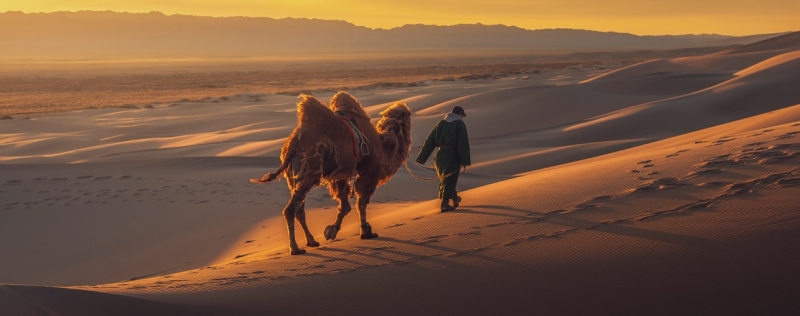
How to prepare for a trip to the Gobi Desert, what to consider when packing and what is worth seeing on the spot? Answers to these and other questions can be found in a detailed guide from the experienced team of the Anthropogeos project.
How to get there
The best way to get around Mongolia is with SUVs. You can come to them from Russia (from Irkutsk and Ulan-Ude) – in this case, keep in mind that your team must have the owner of the vehicle, otherwise they may not allow you to cross the border. Another option is to fly to Ulaanbaatar and rent cars there. There must be at least two vehicles in the caravan – traveling alone and in one car is unsafe. If something happens to the crew in the middle of the desert, it won’t be possible to call a tow truck there.
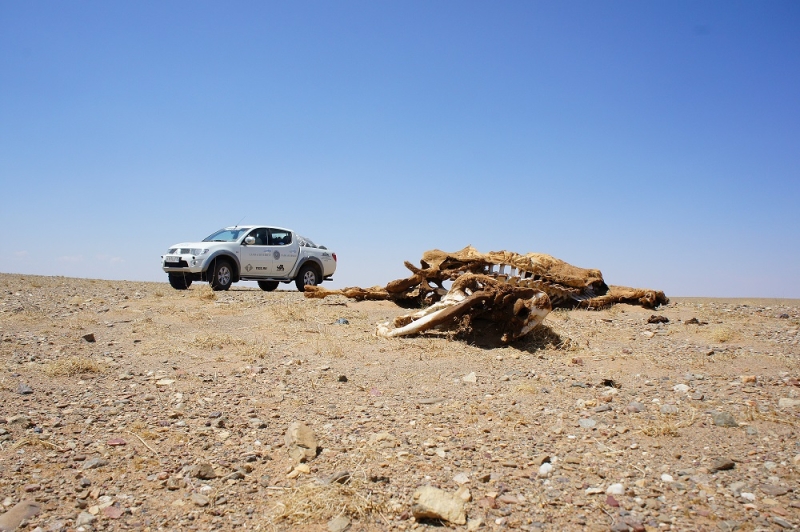
Photo: © Sardar S. Sardarov
When planning a trip with a smaller group, look on forums and social networks for teams that are planning a trip along approximately the same route, and unite. If you are not enough for a full-fledged crew, it is easier to join group tours – in this case, the organizers will think about the technical side of the trip for you. It’s more expensive, but more convenient and safer, especially if you don’t have travel companions.
By public transport, theoretically, you can also travel around Mongolia and even get to the Gobi. However, most of the attractions cannot be reached this way (there are simply no roads), and the route to accessible places will take much longer.
What to see in the Gobi
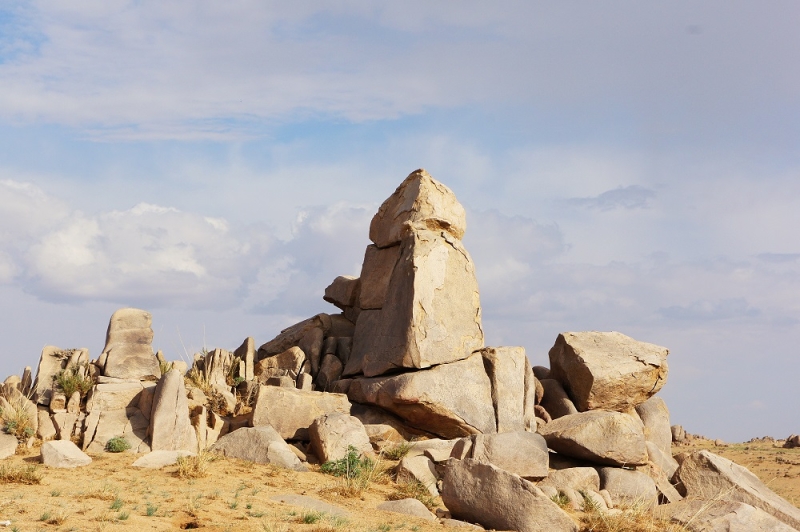
Photo: © Sardar S. Sardarov
The Gobi Desert, even without its attractions, is a unique phenomenon: it has many climatic zones replacing each other, incredible multi-colored soil, red rocks, black sands, green steppes. Just driving along it is already an attraction. Let us dwell only on some places that are worth especially close attention on the journey.
Lake Khubsugul
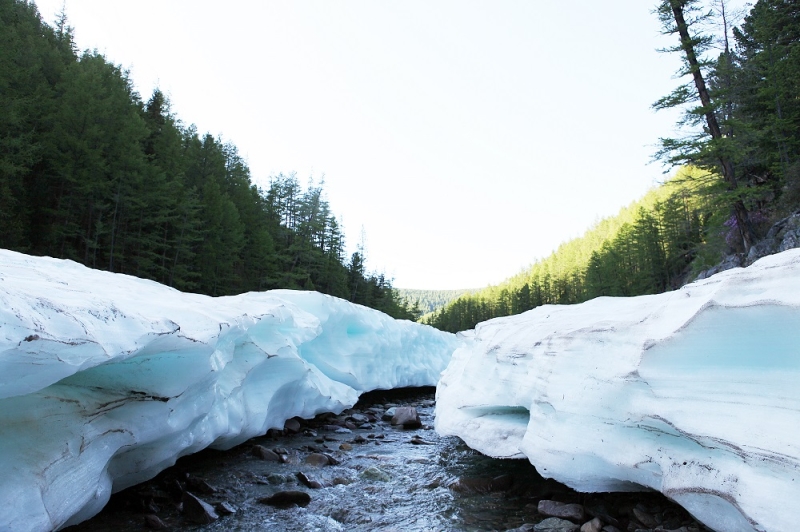
Photo: © Christian Gotte
If you drive from Irkutsk, take a look at Lake Khubsugul – there is no other way to get here, but the place is worth it. Khubsugol is the younger and completely undeveloped brother of Lake Baikal. There are only a few dozen tourist bases here – in the north in the Khankha region (coordinates 51.50655058354604, 100.67162996418291) and in the south in Khatgal (coordinates 50.43476283555756, 100.14553060924229). The views and nature are not inferior to those in Baikal.
Gorkhi-Terelj National Park
To the north of Ulaanbaatar there is the Gorkhi-Terelj National Park with hot springs (coordinates 48.152986602483246, 107.69902717773446). You can swim in them at the Yestii Hot Water Springs spa resort, which is located about 20 km north of Lake Hagin Khar. This park is also famous for its rocks and stones of bizarre shapes, the most famous of which is the turtle stone.
Kharkhorin
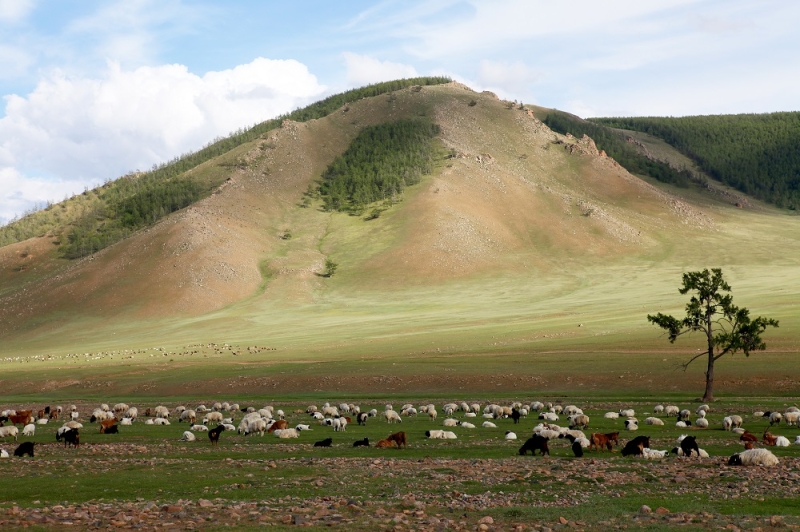
Photo: © Christian Gotte
Another place worth stopping by on the way from Ulaanbaatar is the ancient capital of Mongolia, Kharkhorin (coordinates 47.19675634252003, 102.85254427487276). It is listed as a UNESCO World Heritage Site. The ruins of the ancient city of Karakorum and the Erdene-Dzu monastery are worth visiting here.
Hermen Tsav Canyon
The Hermen Tsav Canyon is a twenty-kilometer-long chasm in clay rocks up to 20 meters high (coordinates 43.05880091621662, 100.25207195093492). In its very center there is an oasis. It was here that the remains and eggs of dinosaurs were found, which caused a lot of noise at the beginning of the 20th century. Excavations here continue today.
Burning Cliffs of Bayanzag
Not so far from the canyon is the Bayanzag area – “flaming rocks”, where many come to admire the sunsets (coordinates 44.28040055796964, 103.75759489714508). In the rays of the setting sun, these red clay landscapes light up with incredible colors. By the way, this place can be reached by public transport – just 15 km from it there is a tourist parking lot and the city of Bulgan. You can even go there in one day.
Khongoryn Els Dunes
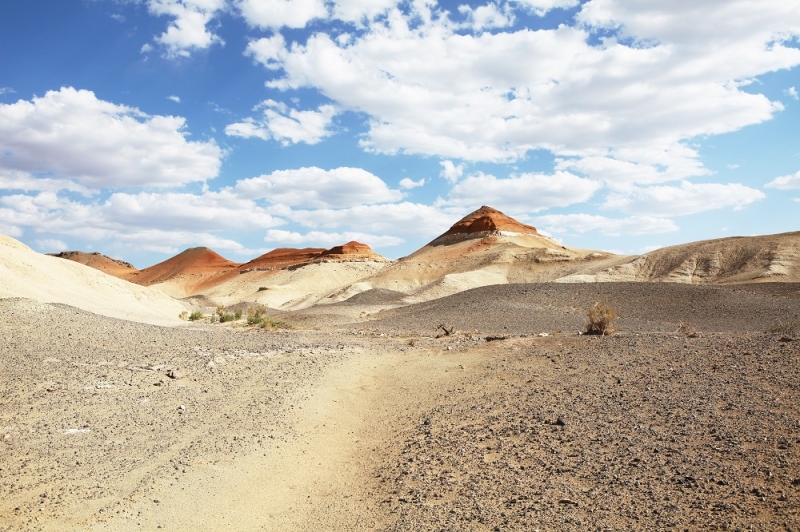
Photo: © Christian Gotte
Khongoryn Els Dunes is another impressive site in the Gobi (coordinates 43.905241638860794, 102.3677632853368). Tall hills up to 100 meters high and 300 meters wide stretch for 15-18 kilometers. The entire sandy zone is about 180 km in length. This place is also unique in that in the Gobi you don’t see sand very often. They occupy only 3% of the area. The Gobi is mainly a rocky plateau. A river flows right next to the dunes, and mountains rise against their background. This part of the desert is located within the Nuruu Gurvan Saikhan National Park and is adjacent to the Great Gobi Nature Reserve.
Great Gobi Nature Reserve
The Great Gobi Nature Reserve is located in the southwest of the desert, on the border with China (coordinates 45.89956552358043, 94.10937645903216). This place was taken under protection to preserve two unique species of animals, of which only a few dozen individuals remain – the wild Bactrian camel and the Gobi bear. To enter the reserve, you will have to obtain permission and pay a fee. You can only travel here by off-road vehicles.
Gurvan Saikhan National Park
Gurvan Saikhan National Park (coordinates 45.53348286148952, 107.0561011895265) is located in the north of the Gobi Desert. It is the largest in Mongolia. This is a great place to stay for a few days in one of the yurt tent camps and see how the nomadic tribes of Mongolia live (for example, the Gobi Discovery 2 camp at the foot of the great dune). Here you can try authentic local cuisine, ride camels and wash yourself, which is very important when traveling by car with tents.
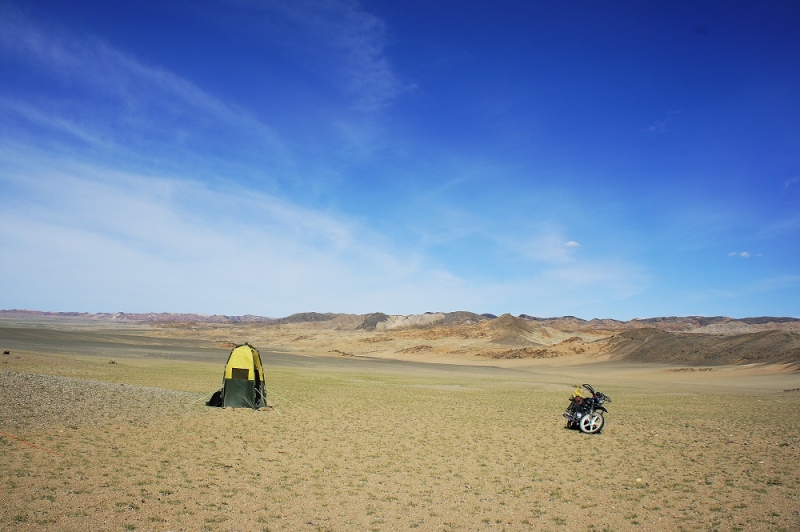
Photo: © Sardar S. Sardarov
Eolyn-am Pad
Pad Yolyn-am, also on the territory of Gurvan Saikhan, is a great place to take a break from the desert landscapes (coordinates 43.93341775465305, 104.06213608955095). The valley is surrounded by mountains 2815 meters high, its own height is 2019 meters. Just a few years ago, the ice at the bottom of the gorge did not melt, regardless of the season, but now this happens over several summer months. The gorge is a restricted entry zone with tickets. The entire infrastructure for tourism has been created here: there are campsites and souvenir shops. You can ride a horse and admire the completely deserted landscapes.
What is important to consider when preparing for your trip
Season
The best season to travel through the Gobi Desert is early autumn or late spring. The weather in this region is quite extreme in summer and winter, and if you are planning a trip by car with tents, choose a time when it is comfortable to sleep in nature.
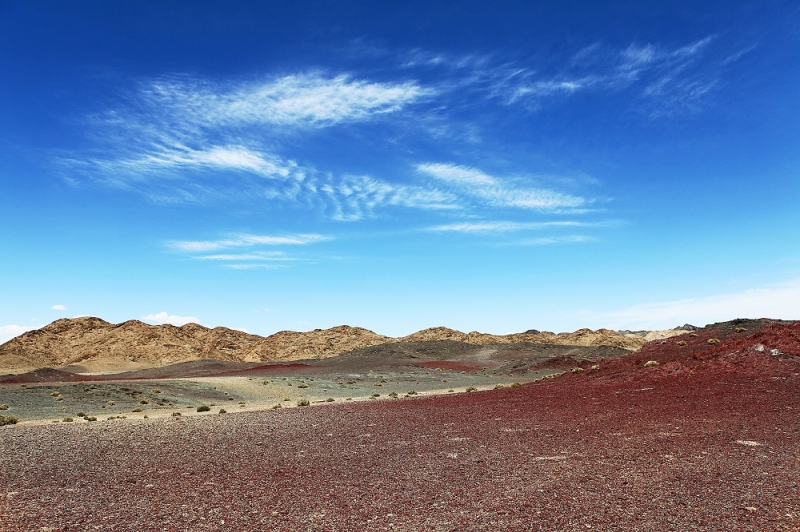
Photo: © Christian Gotte
If your route covers long distances, study the weather along the entire route. Even in a relatively stable season, there can be significant temperature differences between desert and mountainous regions.
Conveniences and communications
Before traveling, make sure you have no health problems. Ideally, we recommend contacting your doctor in advance, who will be ready to consult you by phone in an emergency. Before packing the medications you need, make sure they are not on the list of prohibited imports.
You also need to take with you non-perishable food, drinking water, filters for water purification and disinfectants (it’s quite possible to find a source in the desert, there are many wells there, but it’s not safe to drink from there), fuel (there are also plenty of gas stations here, but it doesn’t hurt to be on the safe side) and spare parts for the car if you know of any chronic problems with it. Especially if you drive European cars, you won’t find spare parts for them even in workshops.
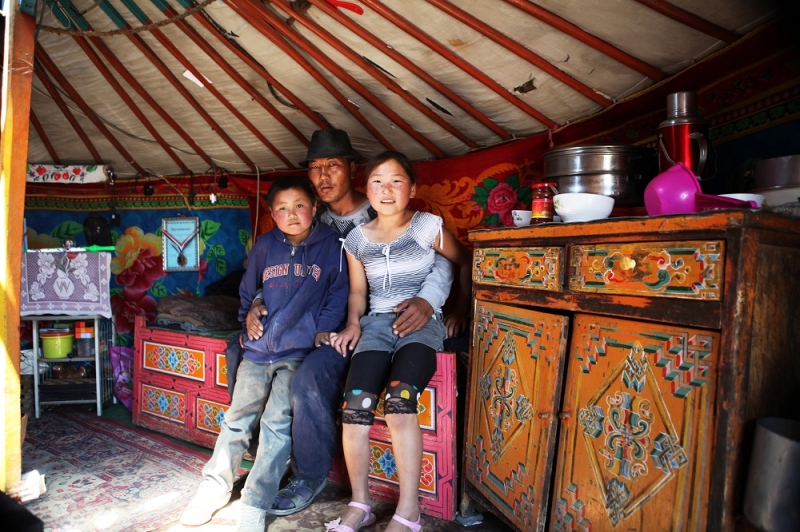
Photo: © Christian Gotte
It’s also better to have money in the form of cash – while in big cities it’s not difficult to pay with a card, in villages it’s impossible to do this.
The main option for overnight accommodation on a trip to the Gobi is a sleeping bag and a tent. In large cities and near the most popular attractions there are accommodation options: hotels and yurt campsites (most often without amenities), but the closer to the desert and further from civilization, the fewer there are.
Where to look for information and accompanying people
Before your trip, prepare all the necessary materials for navigation – communication here is poor, both mobile and satellite. Download everything to work offline, stock up on maps, mark all the places you plan to visit, contact local guides in advance. Finding them now will not be difficult – look on social networks using geotags of tourist sites or by marks on Google maps.
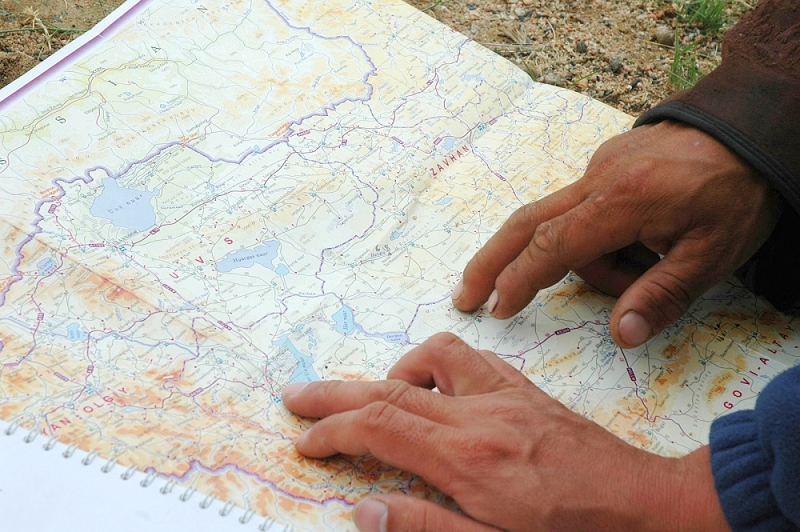
Photo: © Christian Gotte
Another option is to contact travel companies that take groups along the routes you are interested in and ask them for on-site support. Surely they will be able to share contacts with you for a small fee.
For a trip to the Gobi Desert to be full of only pleasant impressions, you need to take preparations seriously and carefully choose the season, think through the route, and also find good company. As the experience of the Anthropogeos team shows, a trip to the Gobi is worth all the effort.
Text: Alexandra Gordienko, project editor “Anthropogeos”
Photo: Sardar S. Sardarov, chief editor of the project “Anthropogeos”, Christian Gotte

